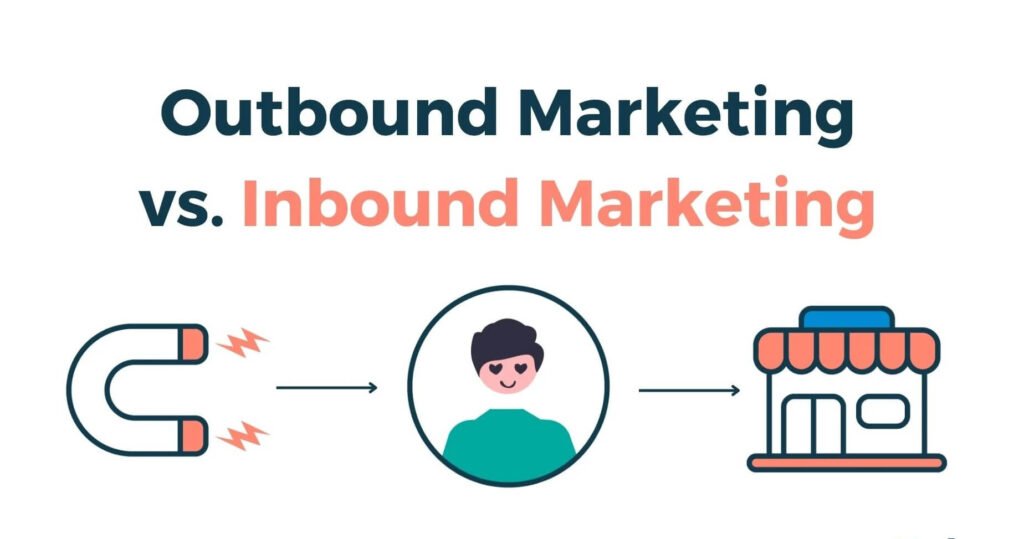Ultimate Guide to Outbound Marketing: Strategies Tips and Best Practices

In this comprehensive article, we will delve into the world of outbound marketing and explore its various strategies, benefits, best practices, and measurement techniques.
Whether you're a seasoned marketer or just starting out, this guide will provide you with valuable insights and resources to enhance your outbound marketing efforts.
So, grab a cup of coffee and get ready to embark on an exciting journey to maximize your brand's reach and engage with your target audience like never before.
Let's dive in, shall we?
What is Outbound Marketing?
For businesses looking to promote their products or services, outbound marketing is a traditional approach that involves actively engaging with their target audience.
Rather than relying on inbound tactics to attract customers by providing value, outbound marketing involves taking a more proactive stance through tactics such as cold calling, direct mail, and advertisements.
This strategy is designed to raise brand awareness, generate leads, and increase sales by actively pushing messages to potential customers.
Despite the rise of digital marketing and the growing importance of inbound strategies, outbound marketing still has its place in the marketing world, offering businesses the opportunity to make direct contact with their target audience and achieve quick results.
To make the most of outbound marketing, businesses have a range of options available.
Cold calling is one of the most widely used tactics, with sales representatives reaching out to potential customers by phone to pitch their products or services.
Direct mail is another popular approach, sending physical mail, such as brochures or flyers, to a pre-defined list of people. Additionally, businesses may also use various forms of advertising, including television, radio, print, and online ads, to spread their message to a larger audience.
When leveraged effectively, outbound marketing can be a powerful tool for generating leads and driving sales.
Although outbound marketing has seen a decline in recent years, it remains a key element of any successful marketing strategy. Striking the right balance between outbound and inbound tactics is essential for businesses to make the most of their marketing efforts and reach their goals.
Outbound marketing provides businesses with a direct line of communication with their target audience, making it a valuable tool for driving sales and creating awareness of their brand.
Benefits of Outbound Marketing
Outbound marketing offers numerous advantages for businesses to leverage, resulting in potentially successful outcomes.
A key benefit is the broad reach of the strategy; through advertising, direct mail, and cold calling, companies can attract attention from those who may not even be familiar with their product or service.
This leads to higher brand recognition and the opportunity to drive up leads and sales.
Moreover, the immediacy of outbound marketing is another advantage. Unlike inbound marketing, which relies on organic traffic and fostering relationships, outbound marketing allows businesses to target potential customers right away. This advantage makes it ideal for those looking to make quick sales or promote limited-time offers.
Furthermore, outbound marketing can help businesses establish credibility and trust in their niche.
By taking the initiative to contact potential customers and providing useful information or solutions, companies can position themselves as experts.
This can establish long-term relationships and foster customer loyalty.
Finally, outbound marketing activities can provide invaluable market insights.
Companies can collect data on consumer behavior, preferences, and demographics, which can then be used to refine marketing strategies, tailor messaging to particular segments, and boost overall marketing effectiveness.
By analyzing the data gained from outbound marketing campaigns, businesses can make informed decisions and maximize their efforts for the best results.
Types of Outbound Marketing Strategies
Outbound marketing is a proactive way to engage potential customers and promote products or services. To effectively reach their target audience, businesses can employ a variety of strategies. Direct mail can be a great choice, allowing for a personal touch when combined with a curated mailing list.
Cold calling is another option, giving businesses the opportunity to establish relationships through direct communication.
Email marketing is a popular outbound strategy, enabling companies to reach a wide audience with promotional messages or newsletters. Social media advertising is also effective, allowing businesses to target specific demographics and showcase offerings through different platforms.
In addition, businesses need to consider other outbound marketing tactics.
Television advertising grants companies the chance to reach a broad demographic with commercials tailored to specific time slots.
Outdoor advertising provides high visibility, with ads placed in public spaces like billboards.
Trade shows and events enable businesses to meet potential customers face-to-face. Radio advertising can be useful for targeting local audiences, with commercials airing on popular stations.
By selecting the right outbound strategies, businesses can increase their brand visibility and generate leads.
Best Practices for Outbound Marketing
A strategic selection of channels and platforms is essential for businesses to optimize their outbound marketing endeavors and reach their intended audience.
It is pivotal to be aware of the individuals you are targeting and their favored communication methods.
This helps you personalize your advertising messages and guarantee they reach the right recipients at the right times.
Social media, email marketing, and classic advertising can be advantageous approaches to engage with your consumers and create leads.
Having a clearly delineated target demographic is necessary for successful outbound marketing. Gaining insight into your ideal customers will let you construct relevant marketing campaigns that resonate with them.
Carry out market research, analyze customer data, and determine the traits, behaviors, and interests of your target audience.
This information will support you in creating persuasive marketing messages that address their needs and wants.
Moreover, to be effective in outbound marketing, it is essential to continuously evaluate and improve your campaigns. Frequently examine and measure the success of your marketing strategies to detect what works and what does not.
Utilize analytics tools to monitor key metrics such as click-through rates, conversion rates, and return on investment.
By analyzing this data, you can pinpoint areas for growth and make informed decisions to optimize your campaigns for more desirable results.
Bear in mind, that outbound marketing is a continuous process, and regular supervision and refinement are key to its success.
Tools and Resources for Outbound Marketing
Outbound marketing campaigns require the right tools and resources to be successful. Here, we'll explore the various options that help marketers maximize their efforts. From email marketing platforms to social media scheduling tools, these provide valuable insights, automation, and data analytics to help marketers reach their desired audience.
Additionally, staying up-to-date with the latest trends and industry news is essential, and that's why we recommend reliable resources like blogs, podcasts, and online forums. With the right tools and resources, marketers can optimize their campaigns and achieve the desired results.
When it comes to outbound marketing, the right tools can be invaluable. We'll look at must-haves like customer relationship management (CRM) software and email automation platforms that streamline processes, track customer interactions, and manage campaigns.
We'll also show you how analytics tools can measure the success of outbound marketing efforts and help you make informed decisions.
Plus, you'll discover the advantages of using social media management tools to schedule posts, interact with the audience, and monitor campaigns.
By using the right tools, you can gain efficiency, increase productivity, and direct messages to the right people at the right time.
Outbound marketing needs a wide range of resources to be successful. Here, we'll showcase the resources available to marketers to enhance their strategies.
From industry reports and case studies to marketing templates and guides, these provide valuable insights, ideas, and practical advice.
We'll also emphasize the importance of staying informed by attending webinars, workshops, and conferences.
Lastly, we'll highlight the significance of networking and building relationships with industry experts, influencers, and peers to be up-to-date with the latest trends and best practices.
With the right resources, marketers can stay ahead of the competition and consistently improve their outbound marketing efforts.
How to Measure Outbound Marketing Results
Analyzing results is a fundamental part of outbound marketing. Without proper measurement, it becomes difficult to evaluate the efficacy of outbound sales tactics and make decisions for future campaigns.
There are various metrics and tools that can be used to measure the success of your outbound marketing efforts. By analyzing these metrics, you can gain important insights into the performance of your campaigns and make data-driven improvements.
An essential metric to consider when evaluating outbound marketing results is the conversion rate. This metric measures the percentage of leads or prospects that become customers or take the desired action.
By tracking your conversion rate, you can assess the effectiveness of your outbound sales strategies in generating actual sales or conversions. Additionally, it enables you to recognize areas where improvements can be made to lift conversion rates and optimize your overall outbound marketing efforts.
When assessing outbound marketing results, the return on investment (ROI) is another key metric to consider. This metric helps you understand the financial impact of your outbound sales strategies and campaigns.
By calculating the ROI, you can determine if your marketing efforts are yielding a positive return and if they are worth the investment.
It also allows you to compare the performance of different campaigns and allocate your resources wisely to maximize your ROI.
Moreover, tracking and analyzing customer engagement metrics is critical in measuring outbound marketing results. Metrics such as click-through rates, open rates, and engagement rates provide insights into how your target audience is responding to your outbound marketing materials, such as emails or advertisements.
By monitoring these metrics, you can gauge the level of interest and engagement your campaigns are generating and make necessary changes.
Furthermore, analyzing customer feedback and response can provide valuable qualitative insights into the effectiveness of your outbound marketing efforts.
Leave a Reply




Related Posts